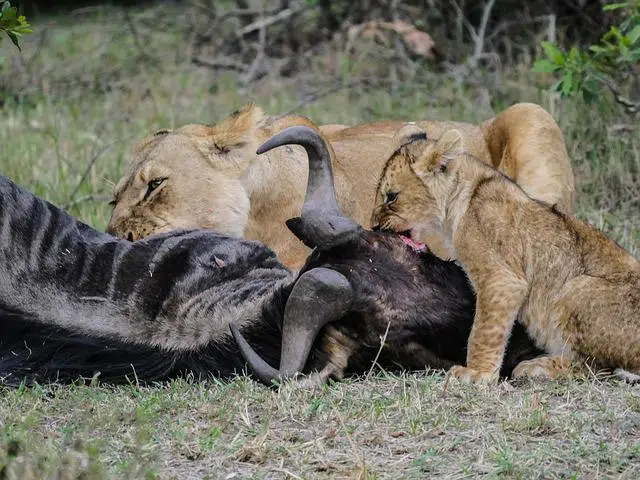
Different trophic levels can be recognized in the food chain.
The notion of trophic , coming from the Greek word trophós , is used to refer to that linked to nutrition : the act and result of nourishing, that is, of ingesting food to increase the substance of the body.
Living beings, through the relationships they establish among themselves by nourishing each other, form the trophic chain or food chain . These chains, in turn, are linked within a biological community, establishing a food web .
What are trophic levels
It is important to keep in mind that species are located in a certain order within the food chain. In this way the idea of trophic levels appears, referring to the sets of organisms that share a place in the chain .
The members of a trophic level, therefore, occupy the same turn or position in the flow of nutrients and energy that is established through nutrition. The different levels, on the other hand, are structured in a pyramid .

Consumers constitute the higher trophic levels.
Decomposers and primary producers
Below the pyramid of trophic levels we find the decomposers or disintegrators . These organisms, such as fungi , bacteria , and protozoa , feed on the remains of other living beings and allow the cycle to continually restart.
Already at the base of the pyramid we find the primary producers . They are autotrophic species, capable of producing organic matter from inorganic matter, such as plants , algae and certain bacteria . For this they resort to chemosynthesis or photosynthesis .
Chemosynthesis starts from the energy released by inorganic compounds reduced in reactions and with it synthesizes adenosine triphosphate (ATP). Photosynthesis, on the other hand, uses solar energy to convert an inorganic substrate into organic matter. In this first trophic level are precisely the living beings that receive energy without having to kill others, but in a relatively passive way.
Higher trophic levels
The next trophic level, moving upward, presents the primary consumers (who ingest the primary producers, receiving energy from them). Then secondary consumers appear (they obtain energy from primary consumers) and higher up, tertiary consumers (who feed on secondary consumers) and finally quaternary consumers (who eat tertiary consumers).
As can be seen, the trophic level of consumers is the broadest. These organisms are heterotrophic , because they produce organic matter from that of others. As mentioned in the previous paragraph, consumers can also be consumed, so that they "give back", so to speak, part of the energy they obtain throughout their life so that the cycle continues.
Primary consumers are the organisms that are close to the primary producers, since they feed on them. At this level we find herbivores, mutualists, commensals and parasites . The rest of the consumers feed on those on the lower level, although not always eating them directly; Those who do are called carnivores or zoophages .
To explain this we can resort to the case of sheep and wolves . The sheep is at the primary level, since it feeds on vegetables. The wolf, on the other hand, is at the next trophic level when it hunts a sheep for food. However, there are other secondary consumers that do not have feeding behavior comparable to that of the wolf. The parasitic fly, for example, deposits its larvae in the sheep's nostrils and they feed inside, but do not kill the sheep. The moth belonging to the tineidae family is on the same level because it feeds on sheep's hair.
